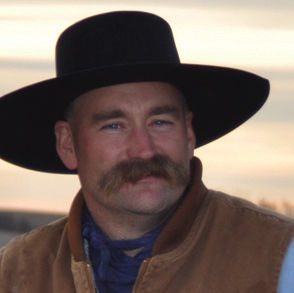Water is the cycle of life
I realize that facts, in most instances, do not matter in today’s world. I think I will just start out by explaining why that is the case.
II Timothy 4:3: For the time will come when people will not put up with sound doctrine. Instead, to suit their own desires, they will gather around them a great number of teachers to say what their itching ears want to hear. They will turn their ears away from the truth and turn aside to myths. But you, keep your head in all situations, endure hardship, do the work of an evangelist, discharge all the duties of your ministry.
My friend Clayton Pederson shared a graphic with me that was produced by the U.S. Forest Service on the issue of water conservation. Ironic isn’t it? The very agency that currently does not properly harvest timber, thereby consuming enormous amounts of water, is now telling us what we should do to conserve water. Everybody should care about water conservation but their last statement really gets my goat:
Eat less meat and dairy. A hamburger requires the equivalent amount of water to produce as 30 people showering.
In case you need a reminder, the U.S. Forest Service is within the U.S. Department of Agriculture. How can our own USDA grossly mislead people about our natural resources? First and foremost, that equation completely leaves out all of products generated with the water as the beef is produced; in particular the makeup, pharmaceuticals, tires and the list goes on and on.
Secondly and the most important point is that we have the exact same amount of water on the planet now as we did when Jesus was walking around. We only use the water and then return it to Mother Earth. I must say this myth is possibly the greatest lie shared and believed yet.
So all of this causes me to once again dig in and find the numbers on exactly where the water is located. Some of this I remembered and honestly some of it was new to me and needs to be shouted from every mountain top.
I believe most know that 97.5 percent of the planet water is salt water. That leaves 2.5 percent of the water as fresh. Right off the bat it is easy to discern the answer to the obvious question of how quickly are we going to be removing the salt from water so that it can be used as fresh water?
Of the 2.5 percent of the fresh water on earth, the breakdown of its location is interesting. Ground water makes up 30 percent and 68 percent is contained in glaciers and ice caps. Surface and other exposed water makes up the balance of just over 1 percent. The bit of information that really got me was that less than 0.5 percent of fresh water actually exists in rivers, 3 percent is in the atmosphere and 3.8 percent is in soil moisture. Finally 2.6 percent makes up swamps and a mere 0.26 percent that makes up living organisms.
Let’s stop and think about where the fearmongering profiteers are trying to get the consuming public to conserve water: in locations where the least amount of water actually exists. How many times are rivers and food producers targeted as the places where we really need to conserve water? Look at the numbers.
I am not saying we should just waste water left and right because it will always be available. I am saying that we need to step back and understand the big picture. Cattle graze cellulose, consume water and produce the essentials of life that improve the planet and human health. Then that water goes back into the cycle. Folks, it is called the “cycle of life” for a reason.
Once again I fully understand those people who have been genetically or perhaps environmentally modified to the point of zero listening potential will not hear the facts and the actual numbers will be lost. But I sincerely hope those of us who truly care about the truth will carry the water information and deliver it at every possible opportunity.
Editor’s note: Trent Loos is a sixth generation United States farmer, host of the daily radio show, Loos Tales, and founder of Faces of Agriculture, a non-profit organization putting the human element back into the production of food. Get more information at www.LoosTales.com, or email Trent at [email protected].
